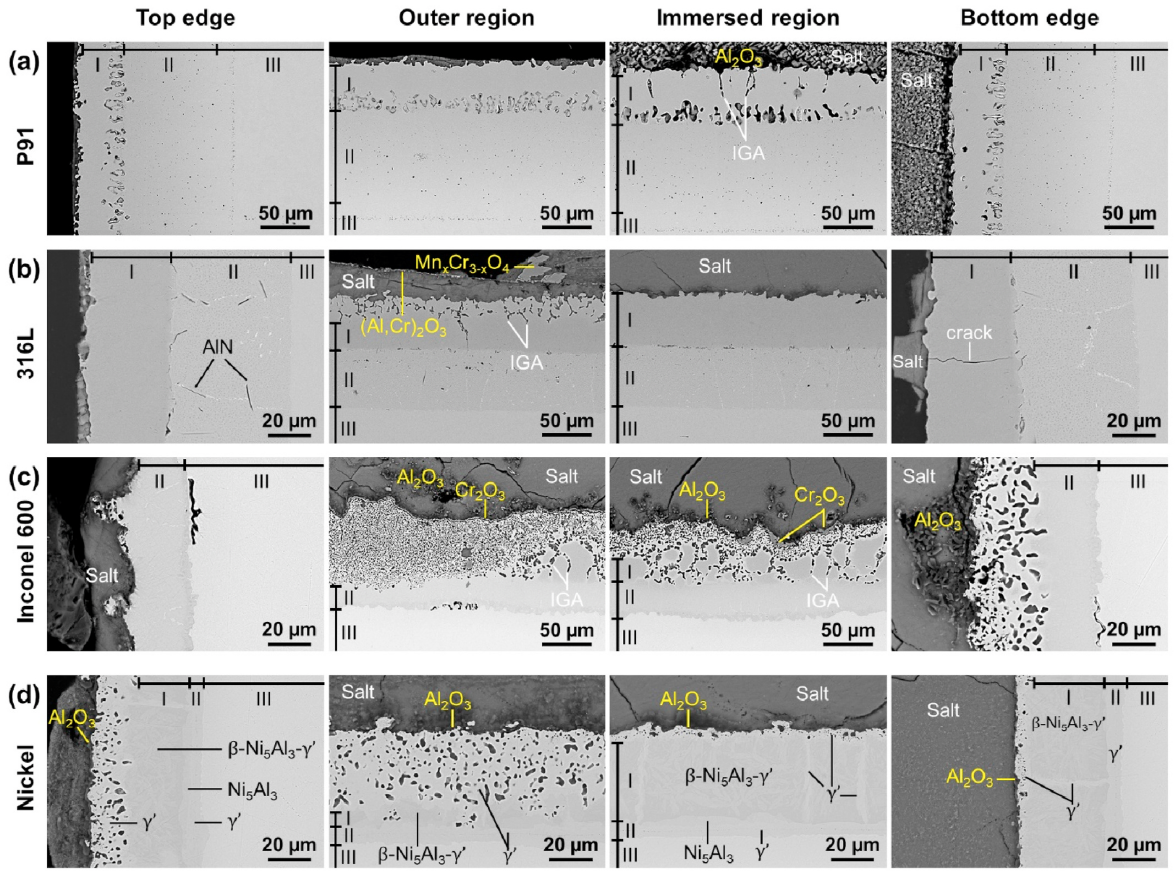B. Grégoire, C. Oskay, T.M. Meißner, M.C. Galetz
Solar Energy Materials and Solar Cells 223 (2021), 110974, DOI: 10.1016/j.solmat.2021.110974

The corrosion performance of water-based slurry aluminide coatings elaborated on iron- and nickel-based materials is investigated in molten chlorides as candidate heat transfer fluids (HTF) for thermal energy storage (TES) in third generation concentrated solar power (CSP) plants. This work presents a screening of four different materials (ferritic-martensitic P91 steel, austenitic stainless steel 316L, Inconel 600 and high-purity nickel) to investigate the influence of the alloying elements (e.g. Fe, Cr, Ni contents) on the microstructure and corrosion performance of slurry aluminide coatings. Individual metallic samples were diffusion-coated with slurries containing Al microparticles and subsequently exposed to molten NaCl–KCl at 700 °C for 100 h under argon. The experimental observations indicate that the performance of the aluminide coatings is governed by the precipitation of secondary phases within the B2 aluminide matrix rather than its intrinsic Al concentration (where B2 refers to either FeAl, (Fe,Ni)Al or NiAl intermetallic compounds). Of those, Fe-rich aluminide coatings were found to be more resistant to molten chlorides than Ni-rich ones. This is attributed to the greater solubility of Cr in iron aluminides than in nickel aluminides, preventing the precipitation of Cr-rich intermetallic compounds and/or Cr-rich carbides within the B2 matrix. Cr-rich phases were selectively dissolved upon exposure leaving the coating matrix with void channels. According to residual coating thickness measurements, the following ranking with increasing corrosion resistance can be given for Al-slurry coated materials: Inconel 600 < high-purity nickel < austenitic stainless steel 316L < ferritic-martensitic P91 steel.